Growing Blog
Must Have Equipment For a Mushroom Lab at Home
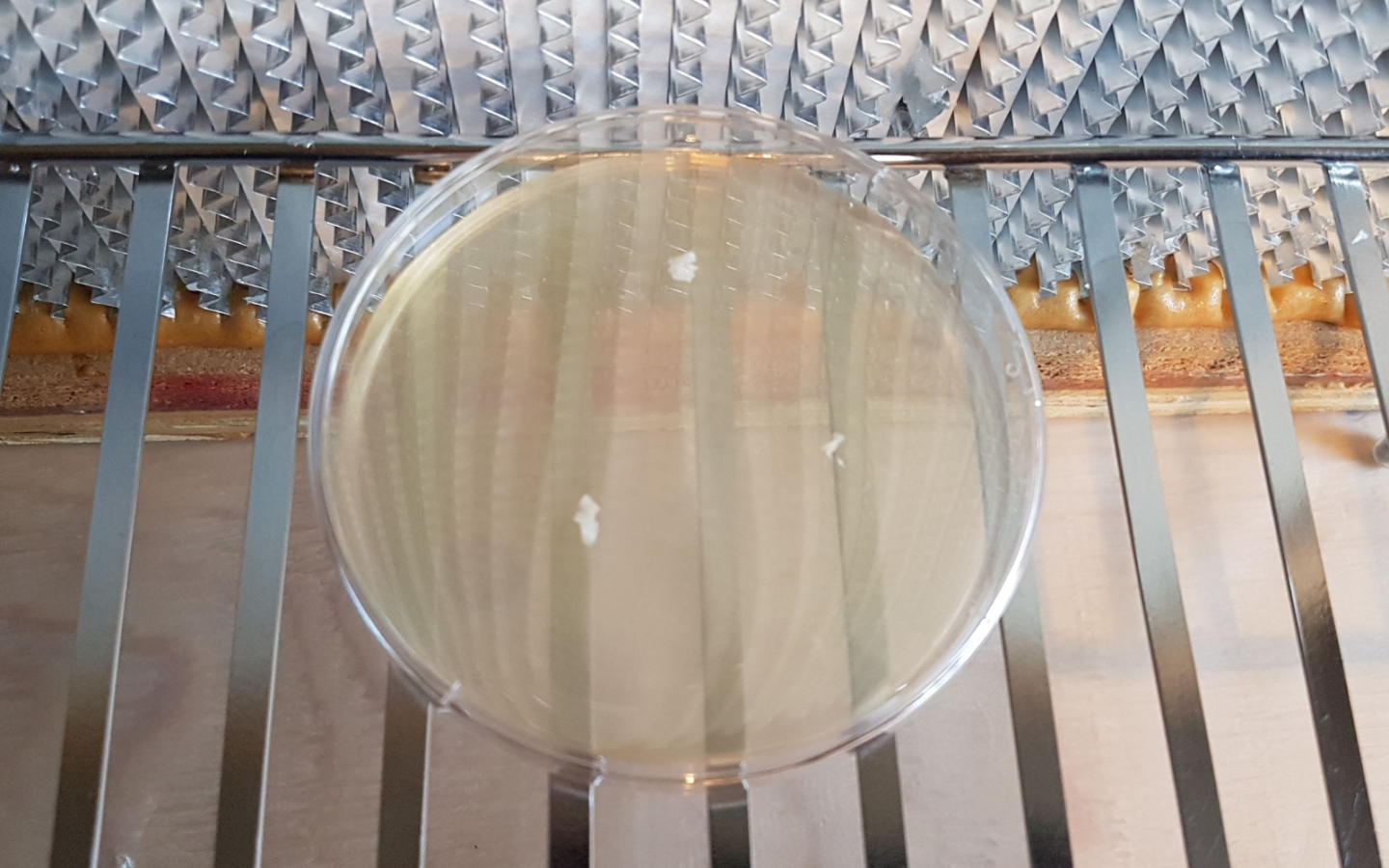
Building a workable mushroom laboratory at home is one of the best things you can do to increase your mushroom growing prowess.
Key skills like making your grain spawn, doing agar work, cloning fruits, isolating strains, inoculating blocks, and much more are made way easier when you have a sterile environment and a few simple tools.
So what do you need to set up your very own mushroom lab at home?
It might be easier than you think!
A Clean and Sacred Space
The basic premise of a mushroom laboratory is to have a space that is clean and free of contamination. It can be as simple or as complicated as you want.
On the extreme end of the spectrum, you might envision a bright, air-tight and temperature controlled room, complete with white walls, bleached floors, steel counter tops, positive pressure HEPA filtration and full body laboratory suits. And although this would work well, it’s neither practical nor necessary for the home cultivator!
On the other end of the spectrum is a simple “still air box” commonly referred to as a SAB. It is simply a large plastic tote, with two holes in front just big enough for your arms. The intention is that the cultivator can do all the necessary lab work inside the box, which can be easily kept clean and relatively draft-free.
With a still air box, most lab can be done successfully- although contamination rates are higher, and using them is quite cumbersome-especially for anything but very small scale home cultivation.
Most growers find a reasonable solution for a home laboratory somewhere in the middle. The bottom line is that you need to find a solution that works for you, depending on your growing needs, the space you have available, and the amount of money and time you want to invest in your lab.
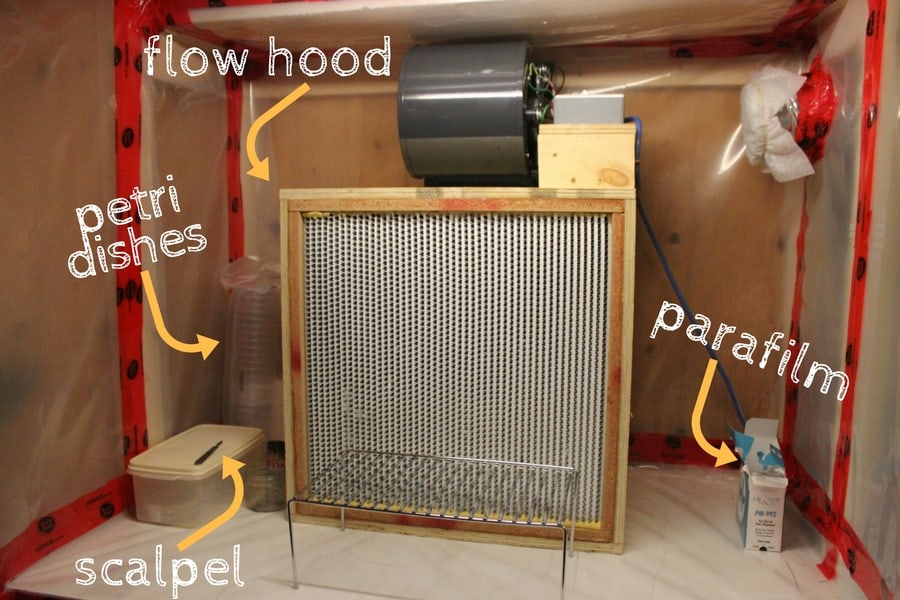
Laminar Flow Hood
Using a laminar flow hood changes the game completely, and is the cornerstone of a functional home lab. This indispensable tool allows for the home cultivator to set up a semi-permanent and completely functional laboratory at home.
Although many people like to set up and dedicate an entire room of their house for a lab, a flow hood can be easily set up on a table and placed in a bedroom, office, basement or closet. Whatever works for you!
As long as there is a clean stream of air coming out of the front of the hood, most mycological work can be done with extremely low rates of contamination.
The Table
Everything will be made way easier if you have adequate space to work- so your table should be big enough to hold your flow hood, all your tools, uncolonized fruiting blocks and jars, and everything else that you may need.
Having everything in close proximity will reduce the chances of contaminating your clean space.
The table should have a smooth, washable surface that won’t harbor any foreign bodies or contaminants. You want to be able to wipe down the table surface with alcohol before any lab work begins.
A simple 4 x 8 sheet of plywood, wrapped in a washable poly sheeting and placed on sawhorses works awesome. It doesn’t have to be fancy, so feel free to get creative!
Essential Lab Equipment and Accessories
So now you’ve got a flow hood and a place to put it, what else do you need to really be a mad scientist of mycology?
Let’s go over some of the must-have lab gear for a workable mushroom lab at home.
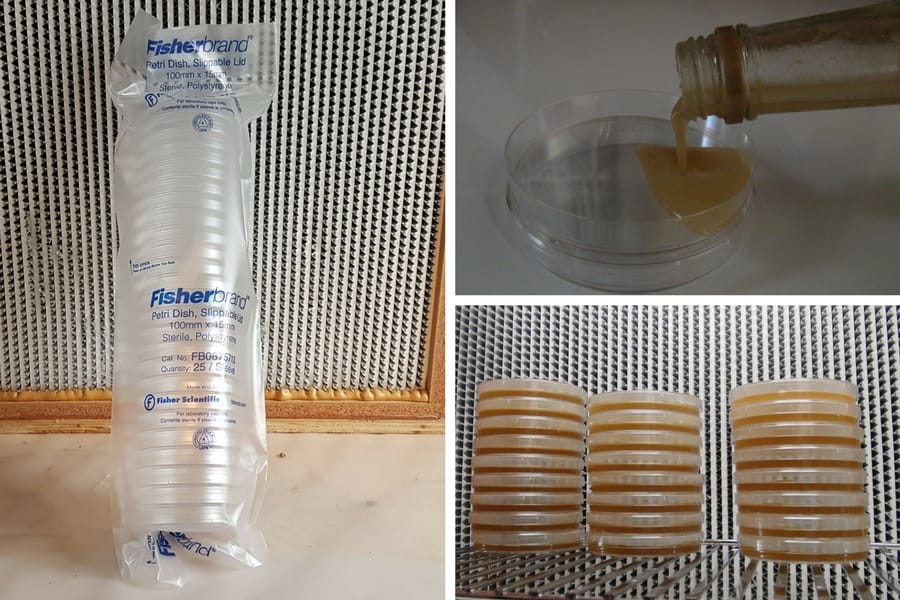
Petri Dishes
You need a way to start, grow out, and store cultures. By far the best way to do this is by using pre-sterilized and disposable petri dishes. The size I use is 100 mm x 15 mm. They come in 25 dish sleeves, and are sterile as long as the sleeve has not yet been opened.
The plastic is reasonably durable, but don’t plan on re-using them. You can get glass dishes that you can use over and over again, but sterilizing these in a pressure cooker is a bit of a pain.
You can get these online, but if you have a university nearby, you might want to check with the biological department and see if they sell equipment to the public. You can often get lots of awesome lab supplies, including petri dishes, for very reasonable prices.
ALTERNATIVE: Feel free to use small ¼ pint mason jars as a petri dish substitute. The only problem is that you can’t see through the lid, and they take up way more room in your fridge!
Nutrient Agar
A petri dish won’t do you any good unless you have a nutrient-rich media for the mushroom cultures to grow.
My personal favourite recipe is Agar-Agar powder ( I use bacto-agar), barley malt extract and nutritional yeast. You can use a variety of different nutrients (potato starch, dog food, etc) but the agar agar is key.
Check out this article to learn the process I use for making perfect plates!
ALTERNATIVE: Some grocery stores sell food grade agar-agar that can be ground up into a powder and used just like bacto-agar. It actually works reasonably well.
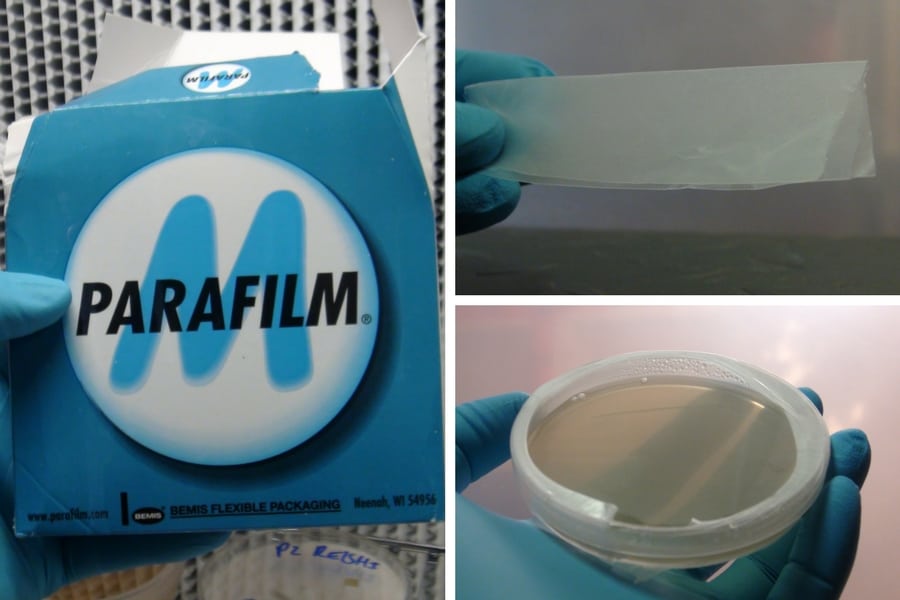
Parafilm
This is an essential item for sealing dishes while still allowing them to breathe. Parafilm is a thin waxy plastic film that can be cut into strips and stretched over the edges of plates. It will naturally adhere to the plates when stretched.
You can also use parafilm to seal the tops of test tubes when making culture slants.
ALTERNATIVE: Use masking tape! Not as user friendly, but does the trick in a pinch.
Pressure Cooker
This almost goes without saying, but a good pressure cooker that can hold a reasonable amount of stuff and rated to 15PSI is absolutely essential to having a functional lab. You can use a pressure cooker to sterilize grains, agar, fruiting blocks, syringes… anything that has to be completely clean!
You can get as fancy or as simple as you want. If you are overly enthusiastic about sterilizing, than you may want to consider the All American Electric Sterilizer. But for the vast majority of home growers, the much cheaper Presto 23 Quart Canner will suffice just fine, although it certainly won’t last as long as the All American.
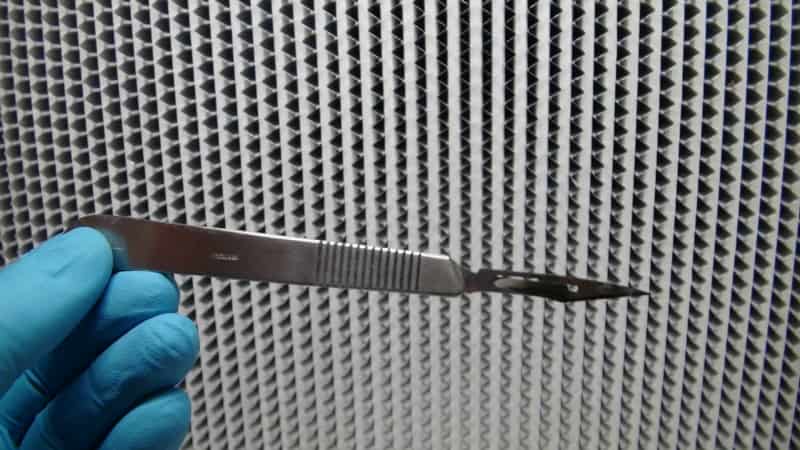
Scalpel and Blades
You need a good scalpel to cleanly cut wedges of agar for transfers or inoculations. The blade also needs to be sterilized by flaming it until red hot between every single transfer.
I like to use size #11 blades (they come pre-sterilized) with a standard handle. These are sharp so be careful!
ALTERNATIVE: A kitchen knife or a razor blade will do the trick, although definitely not as easy to use. Surgical scalpels are cheap, so they are definitely worth getting.
Alcohol
Isopropyl alcohol is indispensable in the lab. I use 99%, although many people use 70%. You use alcohol to clean your hands, clean your work area, wipe the outsides of bags and jars before opening, and to clean any other surface that might harbor contamination.
Stay clean with some alcohol!
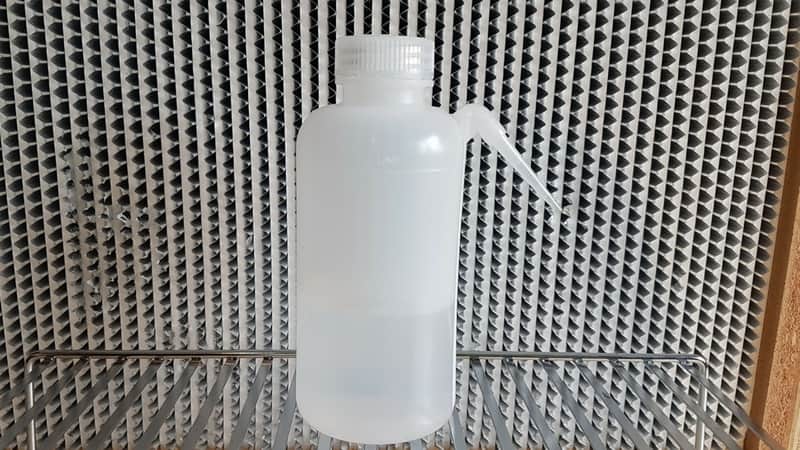
Alcohol Bottle
When I first started growing, I put off getting a proper squeeze bottle for the longest time- and I really wish I had just bought one right away.
Sure you can just pour it out of the bottle it comes in, but the little squeeze bottle makes it so much easier! You won’t waste nearly as much alcohol, and you won’t have to be always fumbling with a lid.
ALTERNATIVE: Just use the bottle it comes in.
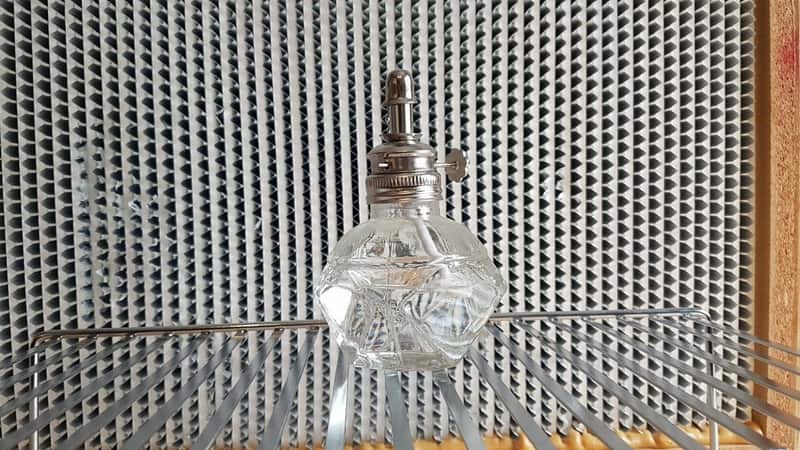
Alcohol Lamp
As mentioned above, you need to flame sterilize a scalpel before each and every transfer.
An alcohol lamp provides a constant flame so that you don’t need to be reaching for a lighter every time you need some heat. You can also use an alcohol lamp to sterilize needle tips if you are working with liquid culture syringes.
ALTERNATIVE: Use a lighter, or a shot glass filled with alcohol. Be careful with the shot-glass method. You don’t want to knock it over when it is on fire!
Nitrile Gloves
Your hands are probably the most likely source of contamination when doing lab work. All the gross germs on your hands and under your fingernails won’t go away no matter how many times you wash them. A box of disposable nitrile gloves makes for clean hands in no time. You can also constantly wipe your glove covered hands down with alcohol without drying out your skin!
ALTERNATIVE: Go gloveless, but wash your hands thoroughly and often.
Mushroom Grow Bags
This almost goes without saying, but mushroom grow bags are an essential part of growing mushrooms in a sterile manner. Although they are not technically lab equipment, you will be inoculating them in front of a flow hood in the lab- so I wanted to refer to them in this list.
Optional Equipment
Surgical Mask
Surgical masks are a cheap and effective way to prevent problems from a common vector of contamination- your breath! You shouldn’t plan on too much talking, signing, or opening your mouth in the lab- but if you do, these masks can serve as a guard against unwanted bacteria spraying onto your clean plates and grain jars.
Mini Fridge
Of course, once you have the capability of growing cultures out on plates, you’ll want a place to store them all! Having a fridge dedicated to cultures is highly recommended. You can definitely store them in the kitchen fridge, but that harbours endless potential for contamination. This can be mitigated by using a number of Ziploc bags, and being careful about how you are bringing cultures in and out of your fridge.

Impulse Sealer
An impulse sealer can be used to seal your grow bags after they are inoculated. It works by running electricity through a wire that is pressed onto your grow bags, melting the two sides of the bag together. This is more desirable than simply using zip-ties or wires to seal the bags, since it allows for more room on the top of the bag, and also makes mixing easier.
Make sure the impulse sealer you get is wide enough to cover your bags. 12″ works ok, but 16″ is certainly better.
Although they are helpful, impulse sealers are certainly not a necessity.
Build a Lab That Suits Your Needs
Of course, you don’t need to get all these things at the same time- that might be a little overwhelming. But, if you get a flow hood and start to pick away at the other components of a lab, you’ll find that your capabilities and successes (and mushrooms!) will start to grow exponentially.
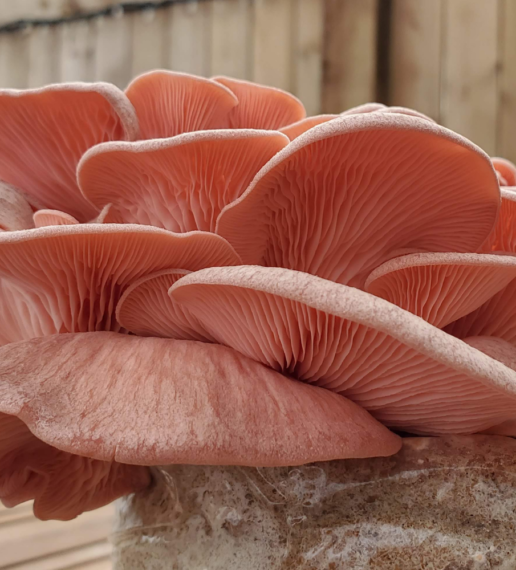
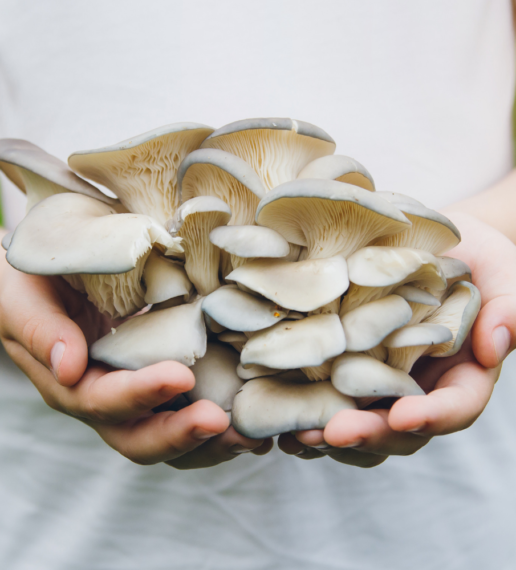
and thank you!
Thank you for all the help.I have just got interested in growing mushrooms and have found it a little overwhelming and hard to find reliable info.i an 64 and have a lot of time on my hands that need to be busy,cant afford alot but do plan to keep plugging away.I bought some surenge moxicillian and i guess i did something wrong,after 2 weeks in a dark room i have nothing,.still trying to learn.thanks so much for all you do for us.
Thanks for all your useful information
Thanks for checking it out!
Hi Tony
Please my substrate bags are fully
Colonized with oyster mushroom spawns but very hard strange things appearing in the bags will please what are the causes.
Very hard to tell without pictures… could be contamination, could be pins! I would say watch it for another couple days, you should be able to tell pretty quick whether or not you have mushrooms. Hope that helps!
Wondering where to find those handy metal racks as seen in you photos for agar plates?
Hi Amanda,
I’ve been looking for that exact rack myself but the closest to it I can find are stackable pie cooling racks.
Lowes- metal plate rack
Hi Tony, I really appreciate all of your fantastic content.
I’ve become obsessed with the stainless steel rack that you have in front of your laminar hood but I can’t find it anywhere. Would it be possible to post a link to a source for it?